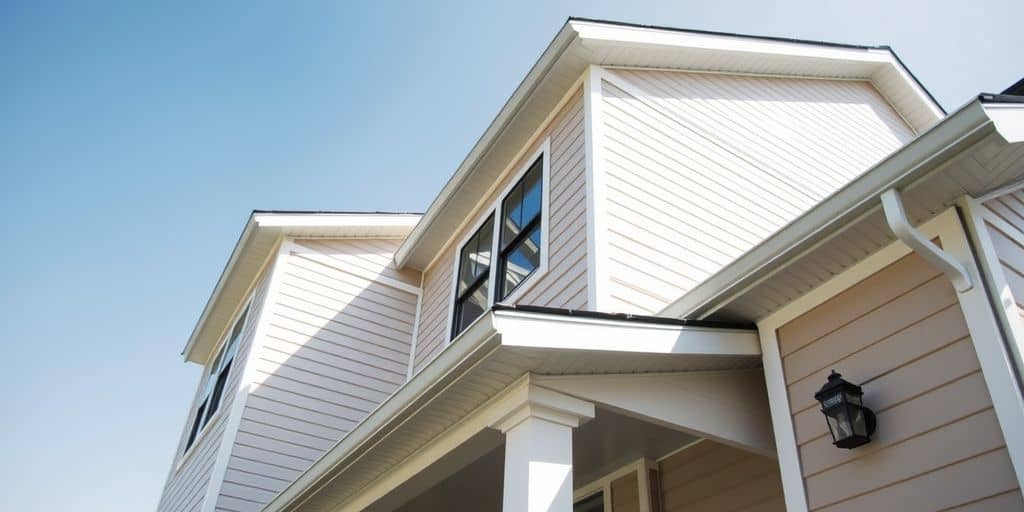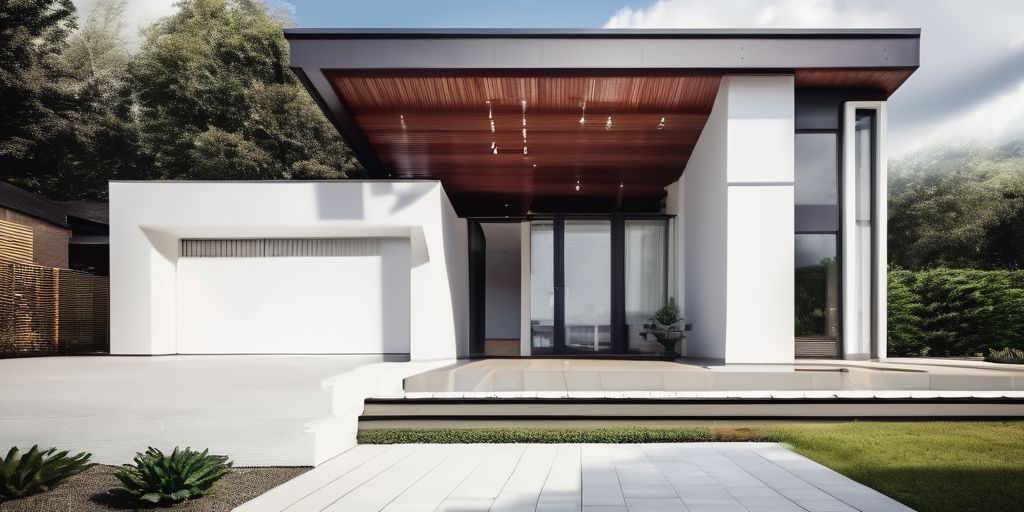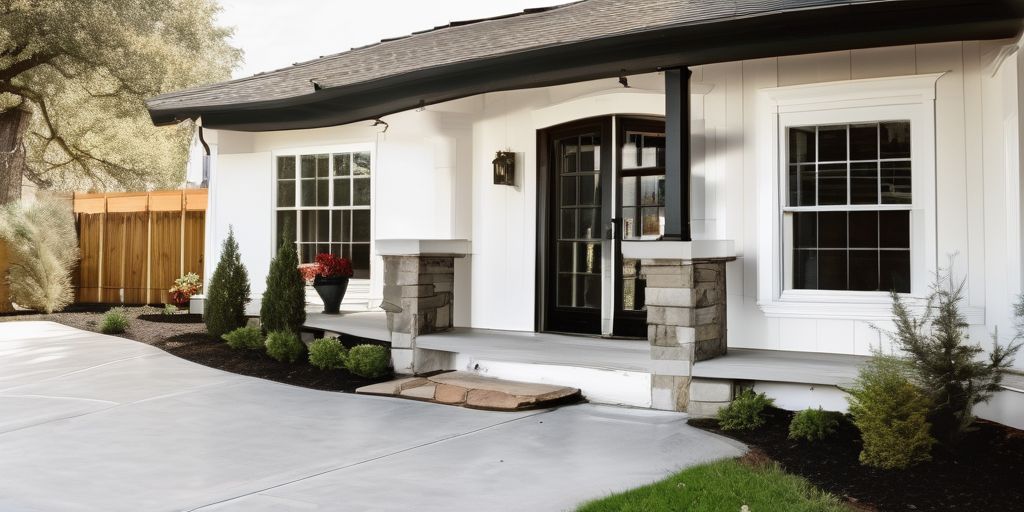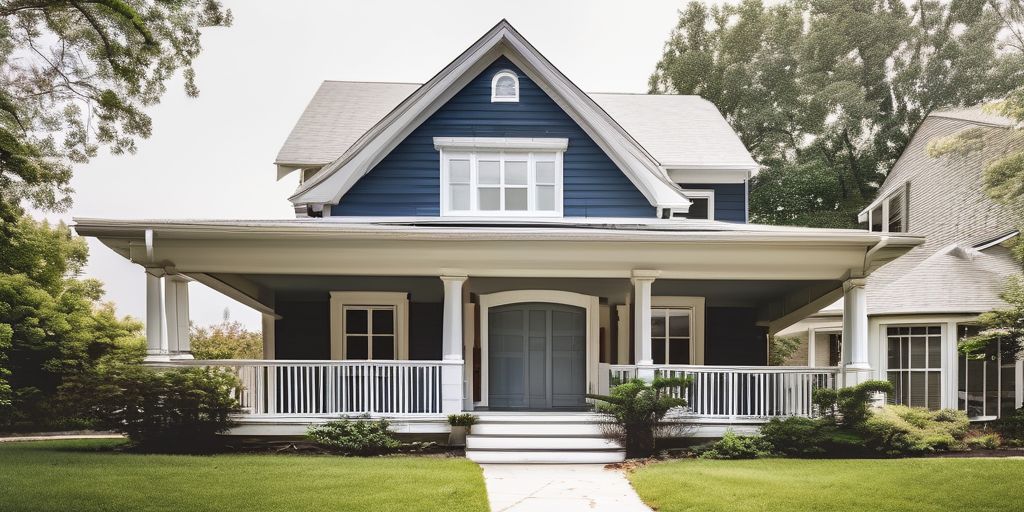Painting aluminum siding in Milton can significantly enhance your home’s curb appeal and longevity. However, choosing the right paint shade and type is critical for achieving the best results. This guide will help you understand the specific needs of aluminum siding and provide tips on selecting the perfect color, preparing the surface, and deciding between DIY and professional painting.
Key Takeaways
- Aluminum siding needs special paint to prevent issues like corrosion and peeling.
- Consider Milton’s climate when choosing paint colors; lighter shades reflect heat, while darker ones absorb it.
- Proper preparation, including cleaning and priming, is essential for a long-lasting paint job.
- Acrylic paint is highly recommended for its durability and adherence to aluminum surfaces.
- Deciding between DIY and professional painting depends on your skill level and the project’s complexity.
Understanding the Unique Needs of Aluminum Siding
Why Aluminum Siding Requires Special Paint
Aluminum siding has unique needs that set it apart from other materials. Unlike wood or vinyl, aluminum can corrode if not properly protected. This makes choosing the right paint crucial. Here are some reasons why special paint is necessary:
- Aluminum is prone to oxidation, which can cause unsightly chalking.
- It expands and contracts with temperature changes, requiring flexible paint.
- The smooth surface needs paint with excellent adhesion properties.
Common Issues with Aluminum Siding
Aluminum siding, while durable, does come with its own set of challenges. Some common issues include:
- Oxidation: This leads to a chalky residue on the surface.
- Dents and scratches: Aluminum can be easily dented or scratched, affecting its appearance.
- Fading: Over time, the color can fade due to exposure to the elements.
Benefits of Painting Aluminum Siding
Painting your aluminum siding offers several benefits that go beyond just improving its look. Here are some key advantages:
- Protection: A fresh coat of paint acts as a barrier against the elements, preventing corrosion and weathering.
- Customization: You can choose from a wide range of colors to match your personal style and home design.
- Maintenance: Painted surfaces are easier to clean and maintain, keeping your home looking fresh.
When considering painting your aluminum siding, remember that it’s an investment in your home’s durability and curb appeal.
Choosing the Perfect Color for Your Home
Considering Milton’s Climate
When selecting a paint color for your aluminum siding, it’s essential to consider Milton’s climate. Lighter colors can reflect sunlight, making them ideal for hot summers, while darker shades absorb heat, which can be beneficial during colder months. Here are some tips to keep in mind:
- Lighter colors help in reflecting sunlight and keeping your home cooler.
- Darker colors can absorb heat, providing warmth during colder seasons.
- Always consider the local weather conditions to ensure the longevity of your paint job.
Harmonizing with Neighborhood Aesthetics
Your home’s color should complement the surrounding houses while still standing out. Here are some guidelines:
- Avoid duplicating your neighbor’s colors to maintain a unique look.
- Choose colors that blend well with the neighborhood’s overall aesthetic.
- Consider using bold trim colors to highlight architectural features.
Remember, testing your color choices before fully committing is crucial. Purchase a quart of your selected paint and apply it to a small section of your siding to ensure it’s the perfect match for your home.
Selecting Colors Based on Architectural Style
The architectural style of your home can significantly influence your color choice. Here are some points to consider:
- Historical homes often look best with colors authentic to their era.
- Modern homes can benefit from monochromatic schemes or bold colors like sky blue.
- Classic white is always a timeless choice and allows for a bold front door to make a statement.
By considering these factors, you can choose a color that not only enhances your home’s appearance but also stands the test of time.
Preparing Your Aluminum Siding for Painting
Essential Cleaning Steps
Achieving a flawless finish on your aluminum siding begins with meticulous preparation. Before you can even think about applying paint, the surface must be impeccably clean. Here’s a simple guide to ensure your siding is ready for its transformation:
- Start by using a power washer to remove any dirt, debris, or old paint. This will create a clean canvas for your new coat of paint.
- Prepare a cleaning solution with TSP (trisodium phosphate), adding just a capful of household bleach. This potent mixture will tackle even the most stubborn stains.
- Carefully apply the cleaning solution across the siding, ensuring even coverage for a uniform clean.
Remember, the effort you put into cleaning will directly impact the quality of your paint job. A well-prepared surface will hold paint better and result in a more durable finish.
Once the siding is clean, it’s essential to let it dry completely before moving on to the next step. Patience is key; rushing through the preparation stages can compromise the longevity of your paintwork. With your aluminum siding now in a peerless clean state, you’re ready to move on to priming and painting, confident that you’ve laid the groundwork for a stunning and long-lasting exterior.
Importance of Priming
Once your aluminum siding is clean and ready, it’s time to move on to the crucial step of applying primer. This foundational layer is key for ensuring that your topcoat adheres properly and looks flawless. Here’s how to get it right:
- Choose a primer specifically designed for aluminum siding.
- Apply the primer evenly across the surface, ensuring full coverage.
- Allow the primer to dry completely before applying the topcoat.
Primers create a uniform surface for the paint to adhere to, help in preventing discoloration, and ensure true color representation. They can significantly reduce the number of topcoats required, especially with deep colors.
Ensuring your siding is impeccably prepared is the foundation for a paint job that not only looks stunning but also provides lasting protection against the elements.
Repairing and Smoothing the Surface
Before an exterior painter can begin transforming your aluminum siding, proper preparation is crucial. Here’s a simple guide to ensure your siding is ready for a fresh coat of paint:
- Inspect the siding for any dents, scratches, or other damage.
- Use a putty knife to fill in any dents or holes with an exterior-grade filler.
- Sand the filled areas smooth once they are dry to ensure an even surface.
- Wipe down the siding to remove any dust or debris from sanding.
Patience and attention to detail are your best tools. Take your time, and don’t rush the process.
By following these steps and taking your time, you’ll be well on your way to a successful DIY paint job that you can be proud of for years to come.
Selecting the Best Paint for Aluminum Siding
Why Acrylic Paint is Ideal
When it comes to painting aluminum siding, 100% acrylic paint is often the top choice. This type of paint is known for its durability and strong adhesion to aluminum surfaces. Here are some reasons why acrylic paint is ideal:
- Durability: Acrylic paint can withstand harsh weather conditions, making it perfect for the varying climate in Milton.
- Flexibility: It expands and contracts with the siding, reducing the risk of cracking or peeling.
- Ease of Maintenance: Acrylic paint is easy to clean, ensuring your home looks fresh for years.
Top Paint Brands for Aluminum Siding
Choosing a high-quality paint brand is crucial for a long-lasting finish. While we won’t mention specific brands, look for paints that offer:
- High moisture resistance: This is especially important in areas with high humidity.
- UV protection: To prevent fading from the sun.
- Mildew resistance: To keep your siding looking clean and new.
Understanding Paint Finishes
The finish of your paint can significantly impact both the look and longevity of your aluminum siding. Here are some common finishes to consider:
- Satin Finish: Offers a soft sheen and is easy to clean, making it a popular choice for aluminum siding.
- Semi-Gloss Finish: Provides a bit more shine and is excellent for highlighting architectural details.
- Matte Finish: While less common, it can give a modern, understated look but may require more maintenance.
When selecting a paint finish, consider the environmental factors and maintenance needs to ensure your siding remains vibrant and protected.
By choosing the right paint and finish, you can enhance the appearance and durability of your aluminum siding, making your home a standout in the neighborhood.
DIY vs. Professional Painting: Making the Right Choice
Pros and Cons of DIY Painting
Taking on a DIY painting project for your aluminum siding can be both rewarding and challenging. Here are some pros and cons to consider:
Pros:
- Potential cost savings
- Full control over every aspect of the job
Cons:
- Requires a significant time investment
- Risk of lower quality finish without professional expertise
Preparing your home for painting, choosing the right paint type, finish, and color scheme, and applying paint like a pro are essential for a durable and beautiful exterior.
When to Hire a Professional
Sometimes, hiring a professional is the best choice. Here are some scenarios where you might want to consider it:
- The project scale is beyond a one-person job
- Specialized equipment is required
- You’re unsure about the proper techniques or materials
Cost Considerations
When deciding between DIY and professional painting, cost is a major factor. Here’s a quick comparison:
| Aspect | DIY Painting | Professional Painting |
|---|---|---|
| Initial Cost | Lower | Higher |
| Time Investment | High | Low |
| Quality of Finish | Variable | Consistent |
| Equipment Needed | Basic | Specialized |
While the initial cost of hiring a professional can be higher, the investment may pay off in the long run with a smooth and long-lasting finish on your aluminum siding. On the other hand, DIY painting can be a rewarding project that offers savings and personal satisfaction, provided you have the time and skill to do it right.
Maintaining Your Painted Aluminum Siding
Regular Cleaning Tips
Keeping your aluminum siding clean is essential for maintaining its appearance and longevity. Here are some tips to help you:
- Use a soft-bristled brush to scrub the siding gently. This helps avoid scratches.
- Prepare a cleaning solution with mild detergent and water.
- Rinse thoroughly with a garden hose to remove any soap residue.
- Clean your siding at least once a year, or more often if you live in an area with heavy pollution or near a busy road.
Regular cleaning not only keeps your siding looking fresh but also helps in identifying any potential issues early on.
Touch-Up Techniques
Over time, your painted aluminum siding may develop small chips or scratches. Here’s how to handle them:
- Clean the area around the chip or scratch.
- Lightly sand the damaged spot to create a smooth surface.
- Apply a primer if the bare metal is exposed.
- Use a small brush to apply matching paint to the area.
- Allow it to dry completely before applying a second coat if needed.
When to Repaint
Knowing when to repaint your aluminum siding can save you time and money. Here are some signs that it’s time for a new coat:
- The paint is peeling or flaking.
- There are visible signs of wear and tear.
- The color has faded significantly.
- You notice chalking, which is a powdery residue on the surface.
Typically, aluminum siding needs repainting every 8-15 years, depending on the quality of the previous paint job and environmental factors.
Repainting not only enhances the curb appeal of your home but also provides an extra layer of protection against the elements.
Keeping your painted aluminum siding looking fresh doesn’t have to be a hassle. Regular cleaning and touch-ups can make a big difference. If you’re unsure where to start or need professional help, visit our website for more tips and services. We offer expert advice and quality painting solutions to keep your home looking its best.
Conclusion
Choosing the right paint shade for your aluminum siding in Milton can truly transform your home’s appearance. By considering factors like weather conditions, neighborhood harmony, and architectural style, you can select a color that not only looks great but also stands the test of time. Remember, proper preparation and the right materials are key to a successful paint job. Whether you decide to tackle the project yourself or hire professionals, the effort you put into selecting and applying the perfect paint will be well worth it. Happy painting!
Frequently Asked Questions
What kind of paint is best for aluminum siding?
The best paint for aluminum siding is 100% acrylic paint. It sticks well to aluminum and lasts a long time without peeling.
How often should I repaint my aluminum siding?
You should repaint your aluminum siding every 8-15 years. The exact time depends on the quality of the paint and the weather conditions in your area.
Do I need to use a primer before painting aluminum siding?
Yes, you need to use a rust-inhibiting primer before painting aluminum siding. This helps prevent rust and makes the paint stick better.
Is it better to spray or brush paint on aluminum siding?
Spraying is usually better for aluminum siding because it gives a smooth, even finish without brush marks. However, brushing works well for small areas and details.
Can I paint aluminum siding a darker color?
Yes, you can paint aluminum siding a darker color. Just make sure to choose a high-quality paint that will cover well and last long.
Should I paint my aluminum siding myself or hire a professional?
If you have experience and the right tools, you can paint it yourself to save money. But hiring a professional can ensure a flawless finish and save you time.






